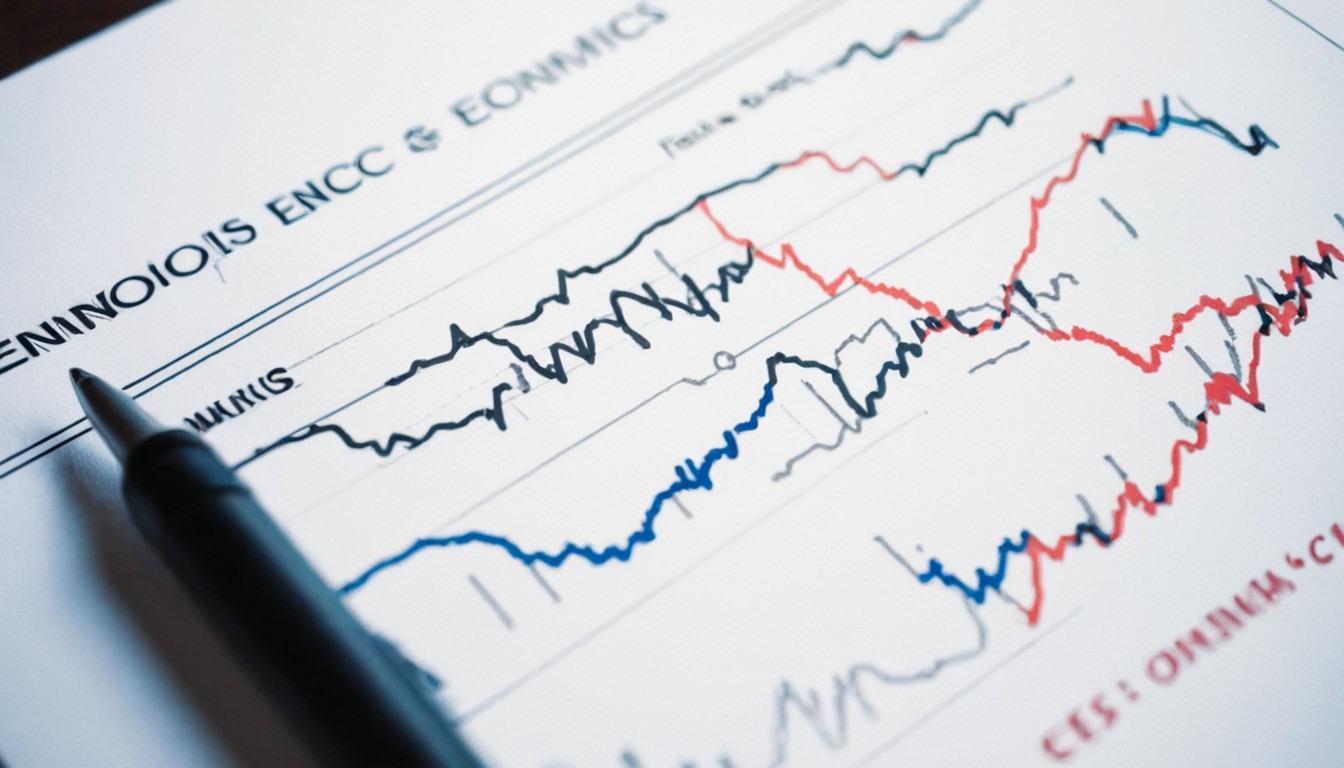Trading economics unveils the intricate relationship between economic indicators and the ever-shifting financial markets. Whether you’re dipping your toes into the world of investments or seeking to grasp the pulse of global economies, understanding the fundamentals of trading economics is your gateway. Let’s embark on a journey to unravel its essence in a manner that resonates with clarity and simplicity:
Exploring the Essence of Trading Economics:
Trading economics is akin to deciphering the language of numbers embedded within economic reports. It revolves around comprehending how these indicators influence trading decisions across various financial instruments such as stocks, currencies, commodities, and bonds. At its core, it empowers individuals to glean insights from economic data, anticipate market movements, and make informed choices.
Essential Economic Indicators:
- Gross Domestic Product (GDP): GDP stands as the heartbeat of an economy, encapsulating the total value of goods and services produced within its boundaries. Its fluctuations offer a window into the economic health and growth trajectory of a nation.
- Unemployment Rate: The unemployment rate mirrors the pulse of the labor force, reflecting the proportion of individuals actively seeking employment. Its trends serve as a barometer for economic vitality, with high rates hinting at underlying weaknesses and vice versa.
- Inflation Rate: Inflation, the silent force shaping consumer purchasing power, measures the rate at which prices for goods and services ascend. Central banks meticulously monitor inflation dynamics, striving to maintain price stability through prudent monetary policies.
- Interest Rates: Interest rates wield immense influence over borrowing costs, investment appetites, and currency valuations. The deliberations of central banks in adjusting interest rates reverberate across financial markets, dictating the rhythm of economic activities.
- Trade Balance: The trade balance delineates a nation’s trade prowess by juxtaposing its exports against imports. A surplus signals economic prowess and competitiveness, whereas a deficit necessitates scrutiny, hinting at potential imbalances in trade dynamics.
Deciphering Market Responses:
- Equity Markets: Stocks sway in response to economic revelations, with investors parsing through data releases for clues on corporate performance and economic prospects.
- Currency Markets: Currency values oscillate in tandem with economic fundamentals, as investors factor in interest differentials, inflation outlooks, and trade dynamics when positioning themselves in currency markets.
- Commodity Markets: Commodity prices dance to the tune of supply-demand dynamics, with economic indicators such as GDP growth and inflation shaping the trajectory of commodity markets.
Crafting Trading Strategies:
- Fundamental Analysis: Delving into economic fundamentals forms the bedrock of fundamental analysis, empowering traders to gauge the intrinsic value of assets and make informed investment decisions.
- Technical Analysis: Technical aficionados decipher price charts and patterns, employing a blend of historical data and market psychology to forecast future price movements.
- Event Trading: A subset of traders specialize in event-driven trading, capitalizing on short-term market volatilities triggered by major economic announcements and central bank interventions.
Navigating the Dynamics of Economic Indicators:
Trading economics entails a delicate dance with a myriad of economic indicators, each wielding its unique influence on market sentiment and price action. From the towering GDP figures to the nuanced whispers of inflation, understanding the significance of these indicators is paramount.
- GDP: As the quintessential measure of economic output, GDP encapsulates the collective efforts of a nation’s production prowess. Its quarterly unveilings send ripples across financial markets, shaping investor sentiment and guiding trading decisions.
- Unemployment Rate: Behind the sterile numbers lies a poignant narrative of livelihoods and aspirations. Fluctuations in the unemployment rate reflect the ebb and flow of economic fortunes, with ramifications extending far beyond statistical realms.
- Inflation Rate: Inflation, the silent arbiter of purchasing power, weaves a subtle yet profound impact on consumer behavior and market dynamics. Its modest upticks or spiraling ascents can herald shifts in monetary policy trajectories, triggering reverberations across asset classes.
- Interest Rates: Central banks, armed with the levers of interest rates, navigate the delicate balance between growth and stability. The pronouncements of central bankers echo through financial corridors, dictating the trajectory of borrowing costs and investment appetites.
- Trade Balance: In an interconnected world, trade balances stand as a testament to a nation’s economic prowess on the global stage. Surpluses beckon to economic resilience, while deficits necessitate introspection and recalibration of trade policies.
Deciphering Market Reactions:
The cacophony of market reactions to economic releases reverberates across trading floors, as traders scramble to interpret data nuances and capitalize on fleeting opportunities.
- Equity Markets: Amidst the ebbs and flows of economic data, equities emerge as a beacon of investor sentiment. Bullish fervor or bearish retreats, each economic revelation etches its mark on stock indices, guiding investors through the labyrinth of market uncertainties.
- Currency Markets: In the realm of currencies, economic indicators serve as guiding stars, steering exchange rates through turbulent waters of speculation and uncertainty. From the majestic ascent of a hawkish surprise to the somber descent of a dovish disappointment, currency markets mirror the ebb and flow of economic fortunes.
- Commodity Markets: The heartbeat of global trade, commodity markets, pulsate in rhythm with economic indicators. From the gleaming allure of precious metals to the black gold coursing through economic veins, commodities embody the essence of economic vitality, reflecting the ebullience or trepidation of market sentiments.
Mastering the Art of Trading Strategies:
In the crucible of trading, strategies emerge as beacons of guidance, illuminating the path to profitability amidst the fog of uncertainty.
- Fundamental Analysis: Rooted in economic fundamentals, fundamental analysis unveils the intrinsic value of assets, offering a compass for prudent investment decisions amidst market fluctuations.
- Technical Analysis: Amidst the cacophony of market noise, technical analysis emerges as a beacon of clarity, navigating traders through the labyrinth of price charts and market patterns, guiding their entry and exit points with precision.
- Event Trading: Event-driven traders, akin to maestros orchestrating symphonies of market volatility, capitalize on the crescendos and decrescendos of economic announcements, seizing fleeting opportunities amidst the tumult of market reactions.
